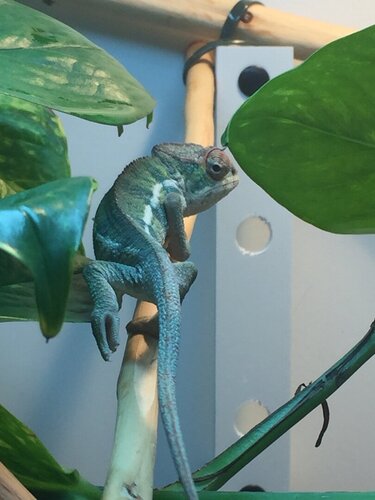Elliechameleon
New Member
We picked up our Chameleon from a breeder who advised us to use a plastic 60 quart storage container to help acclimate him for the first two to four weeks. I haven't read this being the case with other new Chameleons so I thought I would ask. He is 3.5 months old and we have a 2' X 2' X 4' enclosure ready to go. What is your opinion of this? Thanks






